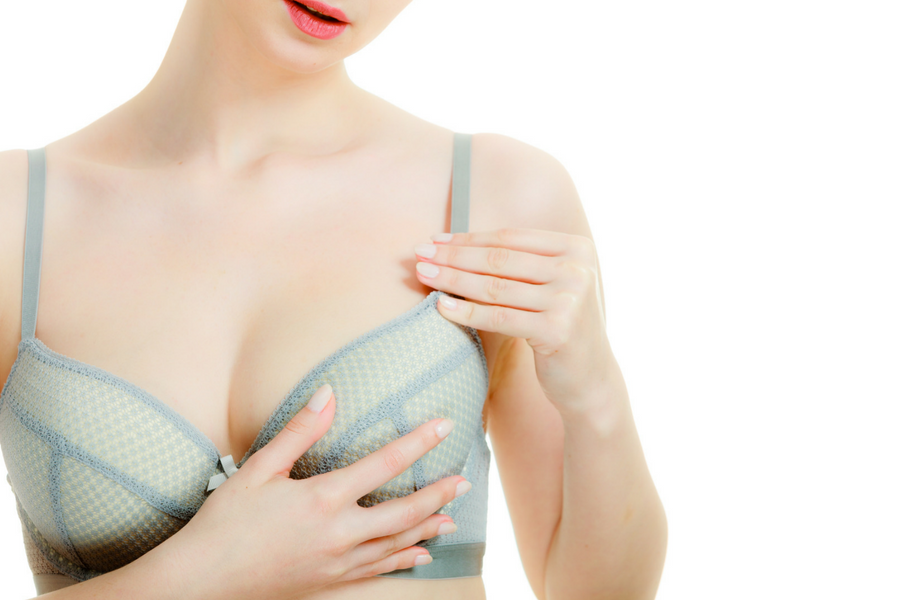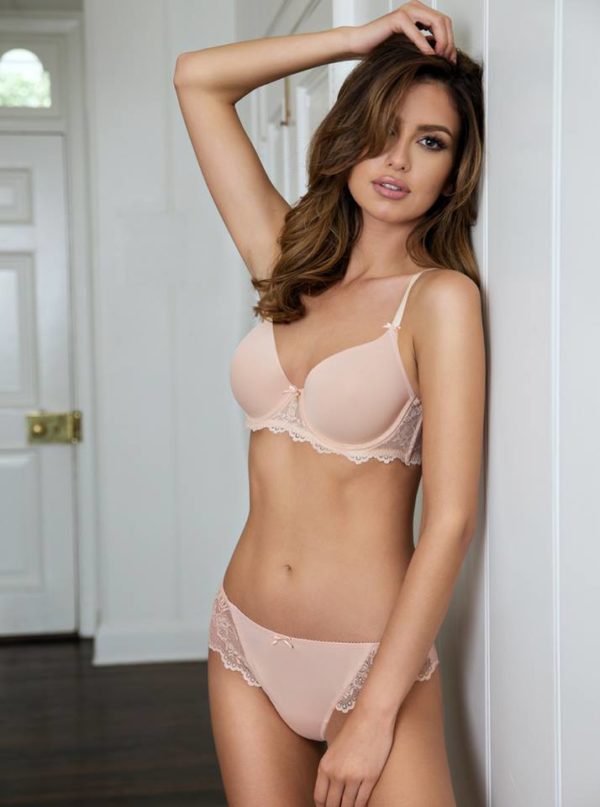Bras are not meant to be painful or uncomfortable. Bras are designed to make you feel comfortable, confident and empowered. If your bra is hurting you, there’s likely a very good reason for it. And, it usually stems from a sizing issue.
Here are the five most common reasons a bra hurts you and how to fix them:
1. The cups squeeze your breast tissue.
The cups of a bra are designed to snugly “cup” your breasts for maximum support and comfort. However, it’s a sign that the cups are too small if they squeeze any part of your breasts. Bra cups that are too small will squeeze your boobs out of the cups – on the top, sides or bottom. This can leave your boobs feeling tired and sore when you take-off the bra.
Try going up in cup sizes to avoid the cups from squeezing your breast tissue.
2. The underwire digs into your skin.
It’s a common misconception that bras with underwire are just downright uncomfortable. But, any discomfort from a wired bra is usually caused by the bra being the wrong size.
The underwire should line the entire bottom area of your breast – extending from your armpit to your cleavage. However, the underwire won’t cover this entire area if the cups are too small. You likely need to increase your cup size if the underwire is digging into any part of your boobs.
3. The bra straps dig into your shoulders.
Bra straps that dig into your shoulders cause more than sore shoulders. Your back can start hurting because the tight straps cause you to tense your muscles. This can then lead to neck pain and a headache.
You likely need to decrease the size of your bra band if the straps dig into your shoulders. When the band is not tight enough, it rides up on your back. This forces your bra straps to carry more weight, and the straps start digging into your shoulders. But, bra straps aren’t supposed to carry any weight. They exist only to help keep the bra in place. It’s the band that’s designed to provide the most support.
Related: Why Do My Bra Straps Dig Into My Shoulders?
4. The bra band squeezes your back
The bra band should be tight enough that it doesn’t ride up on your back. It shouldn’t be so tight that it’s uncomfortable though. It’s not only uncomfortable, it’s also unflattering when a bra band squeezes your back.
You’ll want to go up a size in your bra band if it’s so tight that it’s painful. You can also try a bra with a wider bra band to reduce skin bulging around the band.
5. The boning of the bra rests on your boobs.
Every bra has boning – the materials under the cups that help keep the bra in place. The boning may be underwire or a band if the bra is wireless. The boning should rest directly under your breasts for support, and the panel between the cups (called the gore) should rest directly on your chest between your boobs.
It’s extremely uncomfortable if the boning or gore rest on your breasts, and the issue can be resolved with a bigger bra size.
Discomfort is one of the greatest symptoms of an ill-fitting bra. So, don’t think it’s normal if your bra is hurting you. Head to your local lingerie store and get a professional bra fitting. A bra fitting is the only way to determine your true bra size, so you can find the perfect bra for you.
Related: Ill Fitting Bra Symptoms: Are You Wearing The Wrong Bra Size?
We Highly Recommend
Whether you’re shopping for new everyday bras or lingerie for your boudoir photo shoot, it’s always a good idea to seek out a second opinion. We know how hard it is to find bras that fit well and feel good, especially when you’re doing it on your own. If you’ve ever felt unsure about your bra size or you just don’t know where to go to find good bras, it’s time to let a bra fitter help.
Many specialty lingerie boutiques offer bra fittings. Their expert bra fitters will take the pain and frustration out of bra shopping and do all the work for you. Even better, their product knowledge can save you time and money. Plus, they know where all of the best bras are hiding.
If you’ve struggled with finding bras in the right size, it’s time to make a change. Visit our specialty store locator to find a store near you and schedule an appointment.
Happy bra shopping!




















